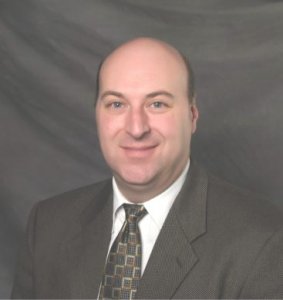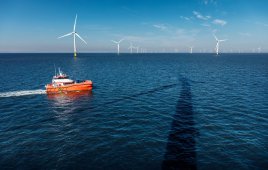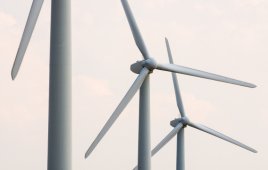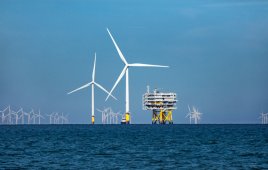Fred Hilsendager and TJ Rolfing, Holmes Murphy & Associates,
holmesmurphy.com/expertise/renewable-energy
Insurance….we can hear the groans already. It is likely we would all agree insurance seems more like a necessary evil than a financial instrument capable of solving business challenges. Over the next several articles we will discuss exactly how insurance and programs like it can help make your “project pencil” out and even improve your bottom line by putting cash in your pocket. Let’s start by getting some of the basics in place. For typical wind farms, there are several basic insurance coverages which should be considered. These include:
• General liability and umbrella
• Property
• Equipment breakdown
• Warranty
General liability and Umbrella is specifically for bodily injury or property damage, or both, to a third party by you or your actions. Luckily for wind farm owners the exposure and premiums are relatively small. The biggest issue surrounding these coverages falls within the various contracts that are entered into, such as power purchase or interconnect agreements. Certain contracts view wind farms in the same light as other power generating facilities such as coal, natural gas, or gas fired, and in turn are requiring large limits which are not warranted by the exposure wind farms pose. It is important to negotiate the umbrella limit required by all of your contracts. Otherwise, your company would be paying premiums for limits that most likely will never be used.
Property coverage is also called All Risk. It provides coverage for all losses not specifically excluded, including those nasty “Acts of God” like fire, lightening, wind, or hail. While not inexpensive, the prices for this insurance have come down substantially in just the last couple of years, due in part to improvements in technology and by an increased number of insurance companies offering the coverage.
Equipment breakdown coverage provides a fair amount of added protection for a typical wind farm. Traditionally, this coverage has been “thrown in” on a property policy. However, in the world of wind turbines it plays an important role because equipment failure accounts for a wind farm’s largest day to day insurance risk. In fact, most wind turbine generators have over 5,000 breakable parts. Coverage to handle these issues is found under an equipment-breakdown policy.
Intended as a second line of defense behind the OEM warranty, an equipment-breakdown policy provides important coverage, but is not intended as a catch-all policy in the same fashion as a warranty. With most insurance policies, equipment breakdown insurance includes several clauses that exclude coverage. For example, if coverage was provided by your warranty it would not also be awarded through your equipment-breakdown policy. Also excluded are design flaws or manufacturing defects found in the turbine; these would typically be covered by the warranty.
An equipment-breakdown policy, like most insurance, requires a “trigger” to put coverage into effect. This means a “fortuitous” loss, one that is sudden and accidental. Warranty coverage differs.
Warranty coverage is the saving grace and Holy Grail for most owners and financial lenders. It is the first line of defense to safeguard against unknowns. A full-wrap warranty covers parts, related labor, availability, serial loss, power curve, noise warranty, and liquidated damages. The unique aspect of a warranty verse traditional insurance is there need not be a “trigger” to award coverage. An example of a “trigger” could be an abnormal amount of vibration in the main bearing. Because the bearing has yet to fail there is no coverage under the equipment-breakdown policy, but because there is a problem with the machine and it is not performing as it should, a warranty claim can be made, minimizing the ultimate cost, the down time, and work required. Warranties give owners and lenders a level of comfort knowing that the financial resources invested in their project are performing and producing as promised.
Many may believe they can only secure this coverage from their OEM, and that coverage after two or five years can become prohibitively expensive. Actually, third parties can provide coverage and with several strong benefits. For example, you can choose your own operations and maintenance company and not be locked solely into OEM parts when better options are available. It is important to note while an insurance policy brings the warranty to market, it is not a standard insurance product. Hence, make sure you use the services of a professional who has experience with third-party warranties. WPE

Fred Hilsendager is an Account Executive in the Property and Casualty department. He help clients improve their risk management, lower their cost, and broaden their insurance protection. He graduated from Temple University in 1990 with a double major in Finance and Risk Management which helps him provide a wide variety of business solutions and cost effective insurance programs. Post graduation, Hilsendager worked on several Fortune 500 accounts. He left to spend several years in Risk Management working for a multinational corporation based in Philadelphia, with manufacturing operations in 17 countries throughout the world. Recently, Hilsendager’s focus has been on various aspects of sustainable energy accounts with Holmes Murphy in Sioux Falls.

TJ Rolfing, an account executive with the company, began his career with it as a Business Development intern. Rolfing and company VP Doug Muth founded the Renewable Energy Unit of Holmes Murphy. This Unit is committed to safeguarding the providers of emission-free electricity. Currently they serve all aspects of the wind industry worldwide. Notably the Energy Unit has developed the first North American based warranty product for wind turbine manufacturers.
Fred Hilsendager and TJ Rolfing, Holmes Murphy & Assoc.
Filed Under: O&M



